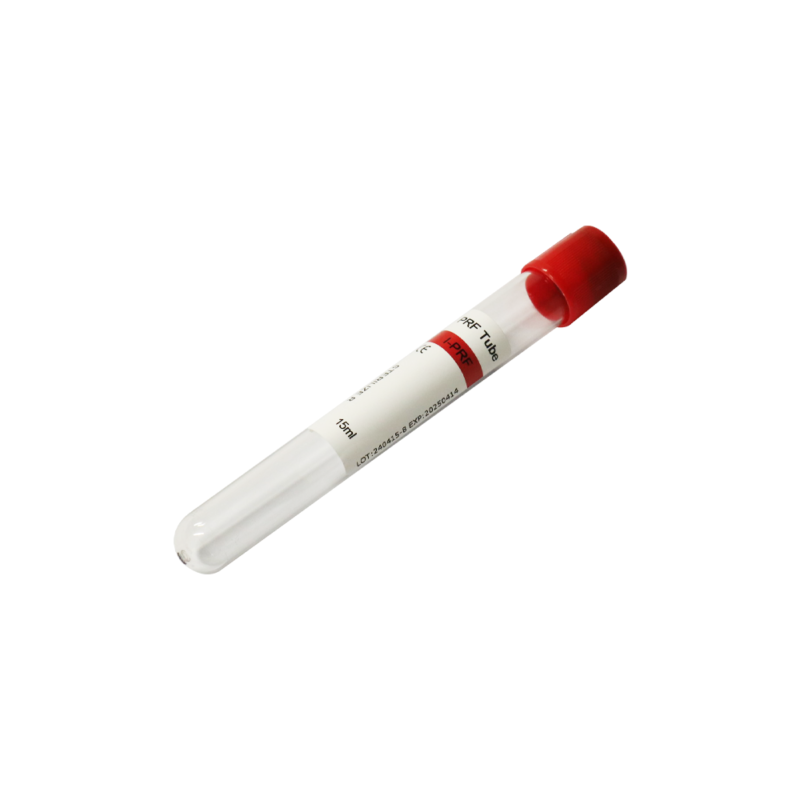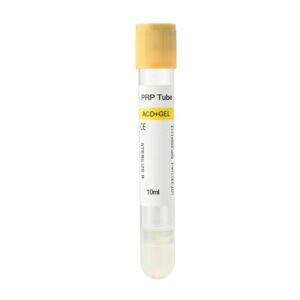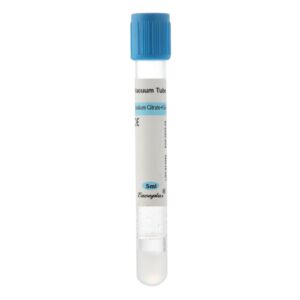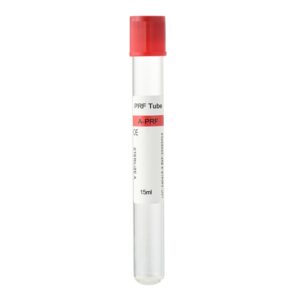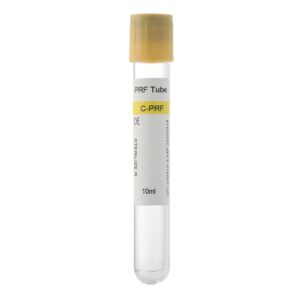What is PRF?
Platelet-Rich Fibrin is a platelet concentrate extracted from a patient’s blood. It is widely used in dentistry and other medical fields, especially for promoting tissue healing and regeneration. Is the second generation of platelet concentrates and offers a more straightforward preparation process and longer-lasting growth factor release than the first-generation Platelet-Rich Plasma (PRP). Its components include platelets, leukocytes, fibrin, growth factors, and cytokines.
- Platelets:
- Platelets are a type of cell component in the blood, primarily promoting blood clotting and wound healing.
- The high concentration of platelets in PRF can release various growth factors, which play a crucial role in tissue regeneration and healing.
- Leukocytes:
- Contains many leukocytes essential in immune response and infection prevention.
- Leukocytes also secrete various cytokines, further promoting tissue repair and regeneration.
- Fibrin:
- Fibrin, derived from fibrinogen, forms a three-dimensional network structure during blood clotting.
- In PRF, the fibrin network provides a scaffold for cell migration and tissue regeneration while slowly releasing growth factors, extending their effect.
- Growth Factors:
- PRF contains several growth factors, including:
- Platelet-derived growth Factor (PDGF): Promotes cell proliferation and angiogenesis.
- Transforming Growth Factor-β (TGF-β): Promotes cell differentiation and tissue repair.
- Vascular Endothelial Growth Factor (VEGF): Stimulates the formation of new blood vessels.
- Insulin-like Growth Factor (IGF): Promotes cell growth and tissue regeneration.
- Epidermal Growth Factor (EGF): Promotes the proliferation of epithelial cells and fibroblasts.
- PRF contains several growth factors, including:
- Cytokines:
- PRF contains various cytokines, such as Interleukin-1 (IL-1), Interleukin-6 (IL-6), and Tumor Necrosis Factor (TNF-α), which regulate inflammation and immune responses, further promoting tissue repair and healing.
- Other Components:
- Plasma Proteins: Including fibrinogen, fibronectin, and platelet factors, these proteins support wound healing.
- Plasma: Nutrients and electrolytes in plasma also support cellular metabolism and regeneration.
Applications of PRF in Dentistry:
The jawbone, which has a relatively low blood supply during dental surgery compared to other tissues and organs, is exposed and cleaned. Reduced blood supply can diminish the healing ability of the tissue and lower its defense against bacterial and fungal infections. Tooth extraction sites typically heal in an open environment. Saliva, bacteria, and other contaminants can enter the vulnerable jawbone during healing. Using PRF, the platelet and fibrin-rich therapy placed in the extraction socket protects the area from infection and provides proteins and growth factors that promote new bone growth. In implant procedures, PRF occupies the space between the bone socket and the implant, increasing surgical success rates and reducing bacterial infection in the bone.
- Periodontal Treatment:
- PRF treats periodontal disease by placing it in periodontal pockets, promoting periodontal tissue regeneration, reducing inflammation, and improving periodontal health.
- Alveolar Ridge Preservation:
- After tooth extraction, PRF can be placed in the extraction socket to promote bone healing, prevent alveolar ridge resorption, and lay a good foundation for future implants.
- Dental Implant Surgery:
- In dental implant surgery, PRF can be placed around the implant to promote bone integration with the implant, accelerate bone regeneration, and enhance implant stability.
- Soft Tissue Grafting:
- PRF is used in soft tissue grafting to promote healing, reduce postoperative infection, and improve the survival rate of grafted tissues.
- Sinus Lift Surgery:
- PRF is a filler in sinus lift procedures to aid bone formation and healing, increasing surgical success rates.
Detailed PRF Extraction Method:
- Preoperative Preparation:
- Patient Preparation: Ensure the patient is healthy, without infections or severe systemic diseases. Provide relevant information and obtain informed consent.
- Equipment and Materials Preparation: Centrifuge, anticoagulant-free centrifuge tubes, blood draw needles, and sterilization supplies.
- Blood Collection:
- Draw 10-20 milliliters of whole blood from the patient’s vein and place it in anticoagulant-free centrifuge tubes immediately.
- Centrifugation:
- Perform low-speed centrifugation with specific parameters. Typical conditions are 2700 rpm for 12 minutes.
- After centrifugation, the blood separates into three layers: the top layer is serum, the middle layer is the platelet-rich fibrin clot, and the bottom layer is red blood cells.
- Extraction:
- Remove the PRF clot from the middle layer of the centrifuge tube.
- PRF can be used immediately or combined with other graft materials during surgery.
Advantages and Disadvantages of PRF:
Advantages:
- High Biocompatibility:
- The patient’s blood derives PRF, reducing the risk of immune rejection and disease transmission.
- Simple Operation:
- PRF preparation is quick and straightforward, without anticoagulants or other chemical additives.
- Sustained Release of Growth Factors:
- The fibrin matrix in PRF slowly releases growth factors, prolonging their effect and providing more sustained regenerative outcomes.
- Enhanced Tissue Regeneration:
- The high concentration of platelets and leukocytes in PRF releases various growth factors and cytokines, significantly promoting tissue regeneration and wound healing.
Disadvantages:
- Limited Volume:
- The amount of PRF obtained from a single blood draw is relatively small, which may be insufficient for large-scale treatment.
- Technical Sensitivity:
- The preparation and application of PRF require strict technical procedures. Centrifugation speed, time, and blood collection speed can affect the final quality.
- Individual Variability:
- Differences in blood components among patients may lead to inconsistent PRF effects.

